Great Ramen, Mole Poblano, French Pastries … Yep, We’re Talking About Downtown Springfield
Plus, Bethia goes on the hunt for Mexican tepache in Columbus.
Day Trips to Springfield Yield Some Great Food Finds
By Andy Dehus
Springfield, Ohio, was a regional symbol of postindustrial decline that last fall became an internationally scrutinized flashpoint for immigration politics.
Now it’s a great place to eat.
I can’t speak to Springfield’s state of mind after the last camera crews left in late 2024, but I feel confident in saying that the harsh spotlight during the 2024 election didn’t dampen the momentum of this Clark County dining scene one bit. If anything, it has energized it.


Some attribute the beginnings of Springfield’s culinary momentum to Speakeasy Ramen, a spot that’s just a few blocks from Frank Lloyd Wright's Westcott House. This “5 star dive bar” that opened in 2019 has drawn fans from far and wide seeking out its flavorful takes on Japanese cuisine paired with hints of Southern cooking, with both influences reflecting the background and training of the restaurant’s founders.
Over two visits to Speakeasy Ramen, we’ve been impressed with how the kitchen merges such disparate traditions so harmoniously. Recommending the restaurant couldn’t be easier, even if a regularly changing menu makes specific dish recommendations difficult. I give bonus points for the depth of flavor of the ramen broths found here as well as the restaurant’s absolutely top-notch chashu pork. Although far from scary, it’s fair to note that Speakeasy isn’t exactly in a “pretty” part of town.
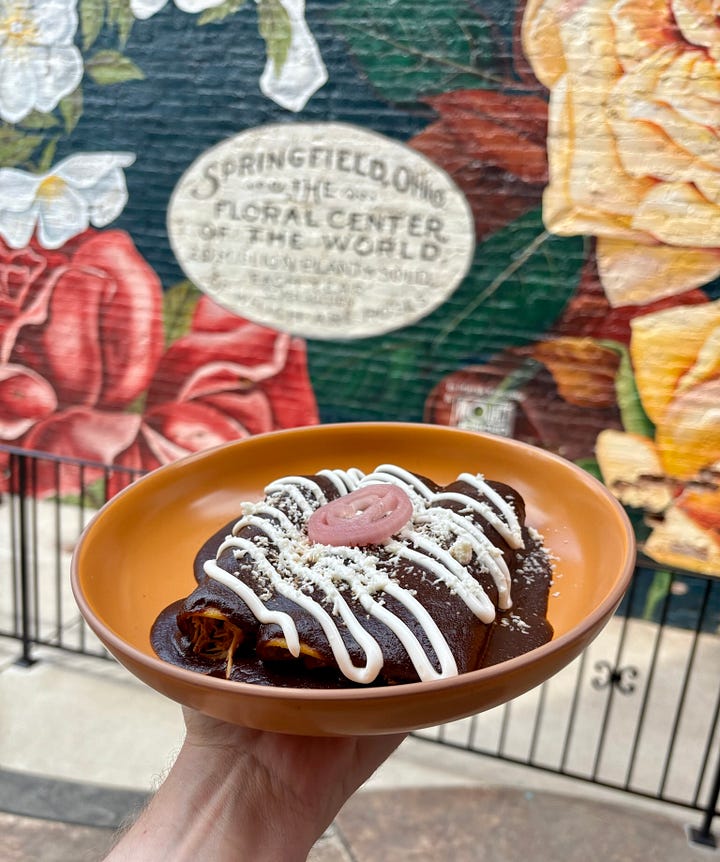
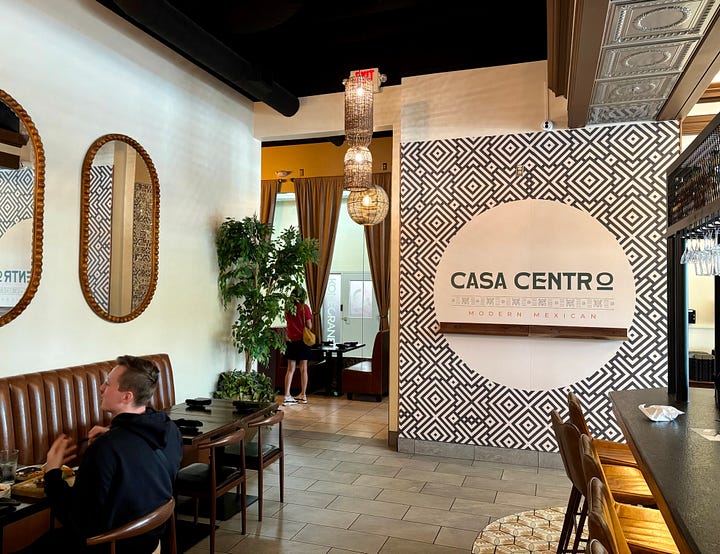
That’s not the case with Casa Centro Modern Mexican, which anchors the first floor of what might be the most charming structure in the city, the Bushnell Building. Open since February of this year, Casa Centro’s appeal extends to a dining space that wouldn’t be out of place on one of the tonier streets of San Miguel de Allende.
Casa Centro is run with family-owned-and-operated levels of hospitality by the Soto brothers, who completely hooked me by sharing a complimentary sample of their pride and joy, a Puebla-style mole (aka mole poblano). Not every version of the complex and notoriously labor-intensive mole genre hits the mark for me, but Casa Centro’s brought on that deep, soul-stirring, whole-palate takeover that true mole aficionados seek but rarely find in the U.S. Even tablemates who had never tried anything like it before were smitten. I returned several weeks later for the full mole enchilada experience and look forward to it yet again.
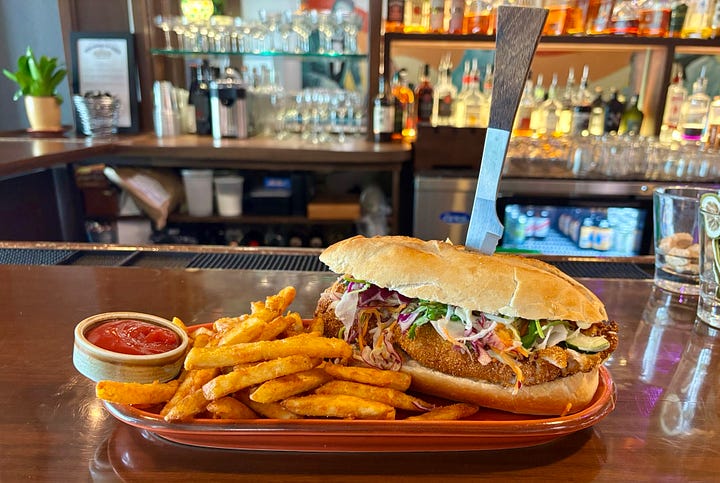

Hi Hat Social, which opened in March of this year, shares a similar “gotta go back” allure. Helmed by chef Clayton Horrighs, who co-opened Speakeasy Ramen, Hi Hat’s mercifully pared-down menu still somehow manages to riff off nearly the entirety of the Asian continent across its spare 18 or so items. Impressively, Hi Hat pulls it off without even a whiff of the sort of try-hard showboating that such ambition usually implies. It’s just straightforward, no-nonsense goodness, at least if the restaurant’s catfish banh mi is anything to go by.
This Viet-Cajun sandwich features cornmeal-dusted and deep-fried catfish, plus carrots, cabbage, kimchi and cilantro. It’s finished off with a tangy garlic sauce. Think: crisp textures, bright and rich flavors in deftly balanced harmony, and an overall taste that strays pretty far away from the original without losing its spirit or its considerable pleasures. A freshly baked French roll seals the experience.
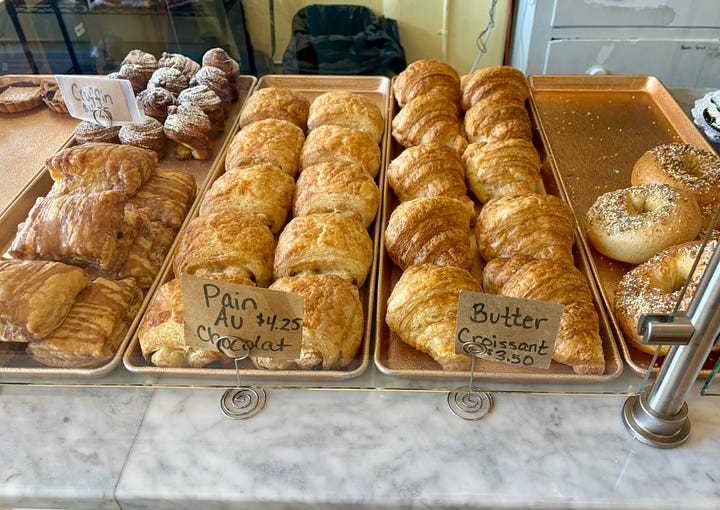
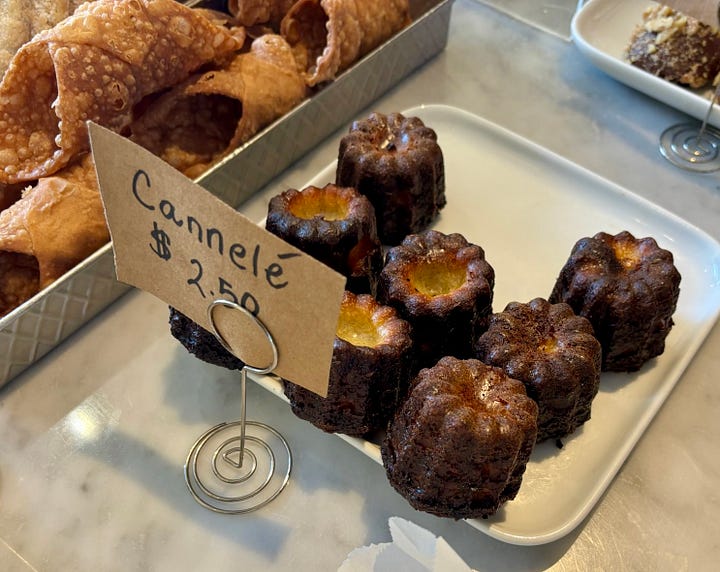
Speaking of which, Springfield’s got baking game, too.
A quick stop into Le Torte Dolci Bakery revealed a tantalizing spread of pastries, including a buttery, flaky, two-sticks-of-chocolate pain au chocolat that compared favorably with just about anything we can find in Columbus. Even more intriguingly, next to the cash register I found a plate of canelés (sometimes spelled “cannelés”). These famously finicky rum-and-vanilla French pastries are known for their custardy centers, crusty almost-but-not-quite-burnt shells, and for the notorious difficulty of achieving those traits. It’s almost expected for a bakery to fail the canelé test, and Le Torte Dolci’s crave-worthy rendition passed with flying colors.
On my last visit, I was headed out of town when I stopped into the Haitian restaurant that drew me to Springfield last fall in the first place, Rose Goute Creole Restaurant. Upon entry I exhausted my French with a feeble attempt at a polite bonjour, which the worker behind the counter reciprocated in kind. She then gestured towards a pastry case, and with the quiet recitation of a phrase I’m sure she’s used with so many non-Haitians in the past, said: “Patties. Beef, chicken, fish.”
Sold. As I drove out of town snacking on a savory Caribbean beef pastry that was every bit as good as my first encounter with it, I reflected on how I’ve had less satisfying food experiences in cities that are far more recognized for their restaurant scenes. That, the cleanliness, the public art, and myriad other signs of improvement make downtown Springfield a genuinely pleasant food-led destination.
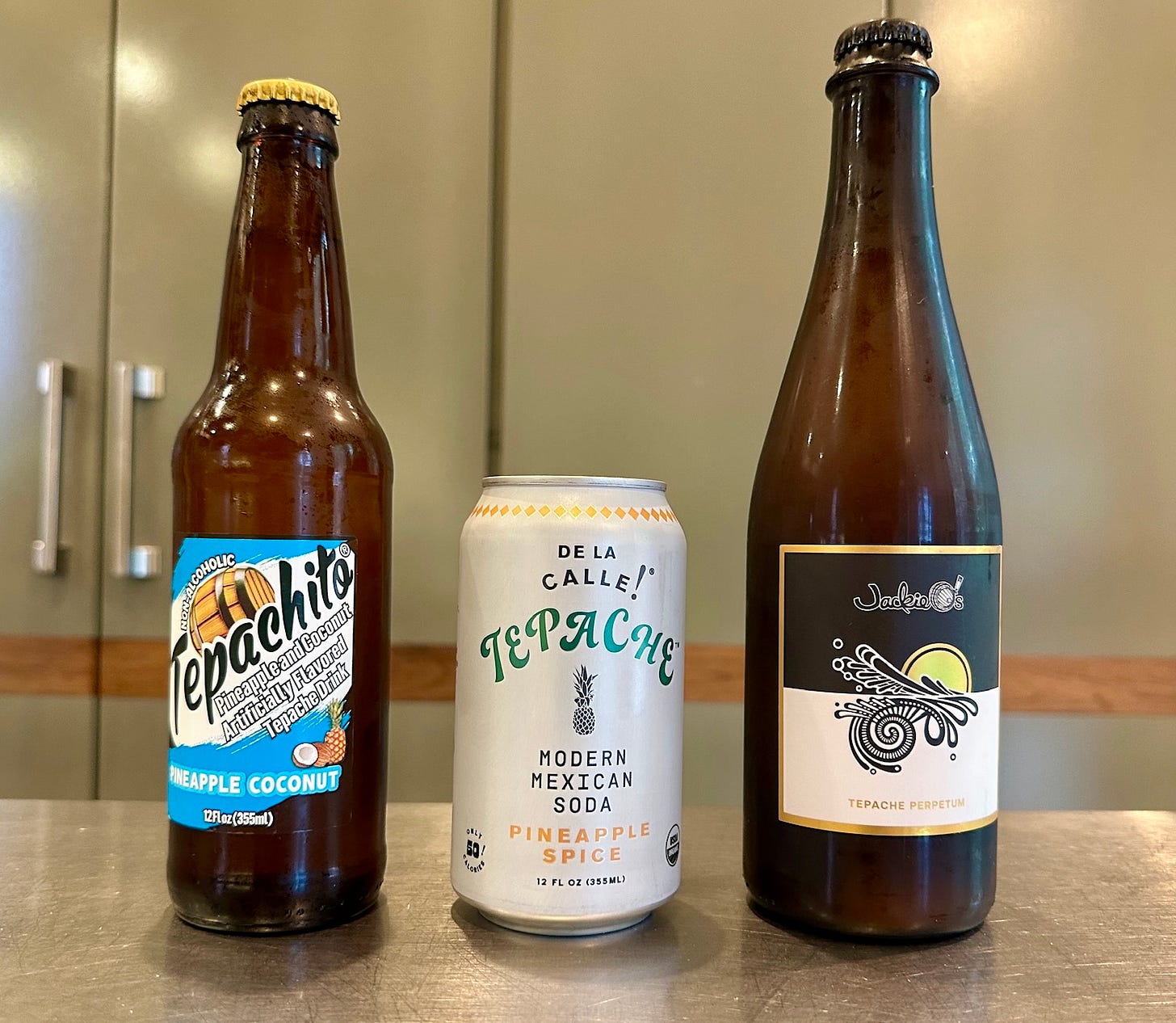
On the Hunt for Tepache in Columbus
By Bethia Woolf
Have you noticed tepache showing up on drink menus or grocery shelves around town and wondered what it is?
Tepache (pronounced teh-PAH-che) is a lightly fermented beverage made from the rind and core of pineapples, combined with water and piloncillo (an unrefined cane sugar that’s sometimes called panela). This traditional Mexican drink dates back to pre-Columbian times and was popular among the Nahua people.
We fell in love with this refreshing drink when we visited Mexico last year. I’ve been on the look out locally for tepache ever since and was excited to see the drink on Mezcla’s menu when it opened this spring.
While the base of tepache is always pineapple, you'll find countless variations each featuring different spices or flavorings. Cinnamon and cloves are common additions, but some versions mix in fruit, coconut or even chile peppers. Tepache is usually served chilled and has a mild alcohol content—typically around 2 percent or less—thanks to its natural fermentation.
Tepache’s popularity has been rising not only in Mexico but internationally, and it’s now available commercially as a non-alcoholic, bottled soda. Fans of kombucha will be happy to know that traditional tepache is also packed with probiotics, thanks to all that good-for-you bacteria.
Where to Find Tepache Around Town
La Plaza Tapatia (255 Georgesville Road)
This West Side international grocery is the only spot we know in Columbus that brews its own tepache in-house. There's no set schedule for when La Plaza offers it, but you can always ask at the prepared food counter to see if it's available. If enough people start asking, maybe they’ll make it more often!
The market also carries bottled non-alcoholic tepache from Tepachito, which comes in original pineapple and other fun flavors like mango, guava and coconut. We sampled the coconut flavor, a sweet drink that’s just calling out to be mixed with rum and a squeeze of lime.
Joya’s (657 High St., Worthington)
Joya’s drink menu features a creative Té-Pache mocktail inspired by the fermented piña drink from Oaxaca. This semi-sparkling concoction is a blend of Joya’s house-made chai sweetened with panela, pineapple juice and a mango chaat cordial.
Robin Myers, Joya’s manager and beverage guru, originally created the drink for fun, not realizing how closely it would resemble traditional tepache. After sharing it with customers—who loved it—he offered a taste to chef Miguel Bautista, a native of Oaxaca who works at Joya’s. Bautista immediately recognized it as tasting just like the tepache from his hometown. Joya’s officially added the mocktail to the menu this spring. While it may not strictly be a tepache, it’s delicious.
Mezcla (1022 Summit St.)
At this new Italian Village restaurant from chef Garrett Talmage, you’ll find a bottled, alcoholic tepache from Tepache Sazón. Think hard cider made with pineapple instead of apple and boasting a noticeable cinnamon-spice note. Tepache Sazón is made from a specific type of pineapple called piña miel (translated as honey pineapple) plus piloncillo and canela (cinnamon). It comes in at 7-percent ABV. You might also find it at The Bottle Shop or Savor Growl.
Jackie O’s on Fourth (171 N. Fourth St.)
Jackie O’s Tepache Perpetum is a sour wheat ale with tepache-inspired flavors. I spoke with brewer Liam McDonald, who explained that they ferment pineapple purée using their house wild yeast culture then let it sit over sliced habaneros and diced ginger for an added kick.
This one’s for sour lovers. It’s juicy, tart, acidic and just funky enough—with a warming fruity heat from the habaneros. Jackie O’s has brewed this one several times as part of a rotating lineup of fruit-forward sours. You can find it bottled at the taproom on North Fourth Street.
De La Calle Soda at Lucky’s Market, etc.
The De La Calle brand of tepache soda is widely available at local markets like Lucky’s Market and Whole Foods. De La Calle makes a range of flavored tepaches. We tried the spiced pineapple, and its flavor profile reminded us of a watery hard seltzer. Sorry, but hard pass.




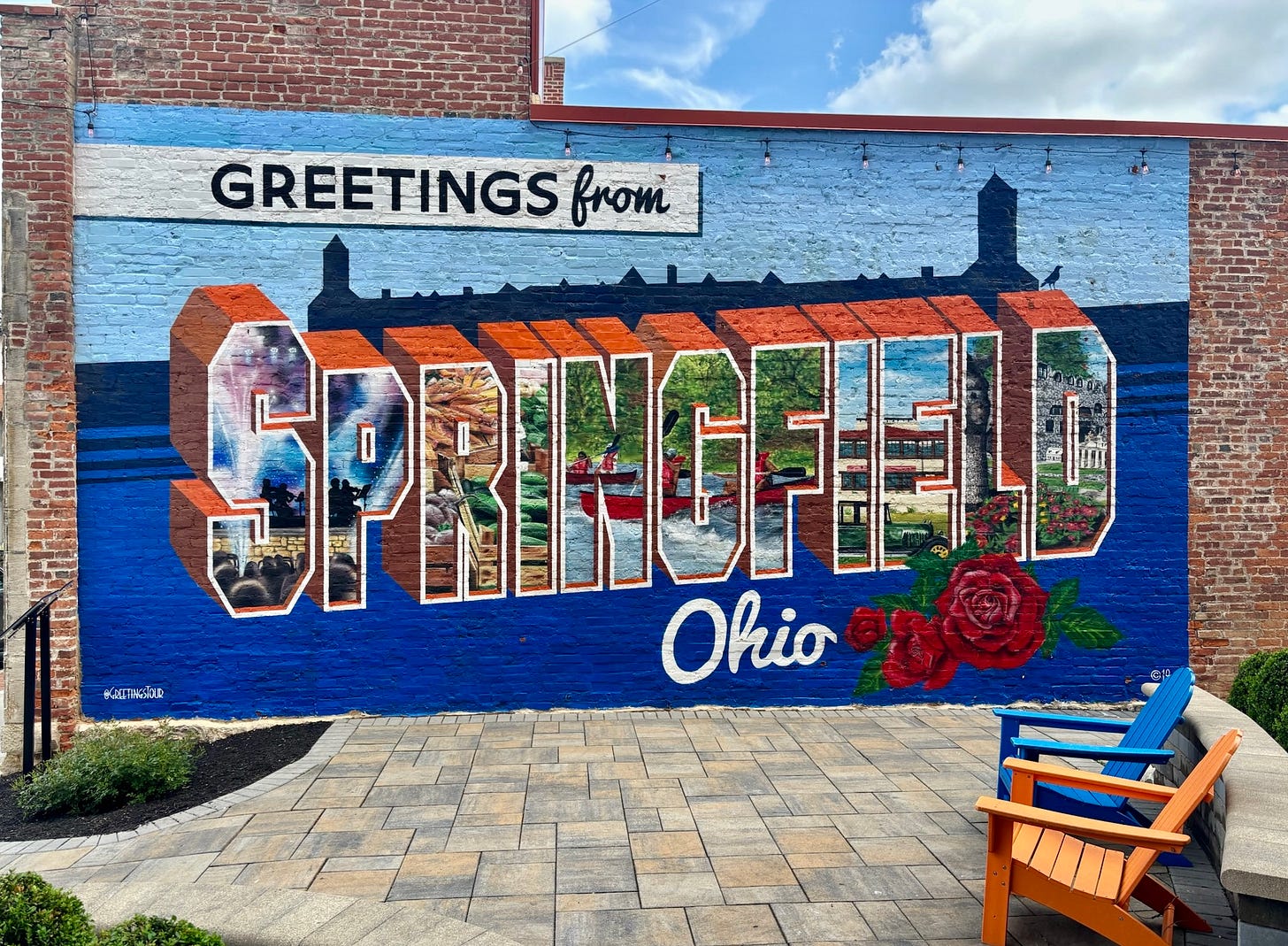
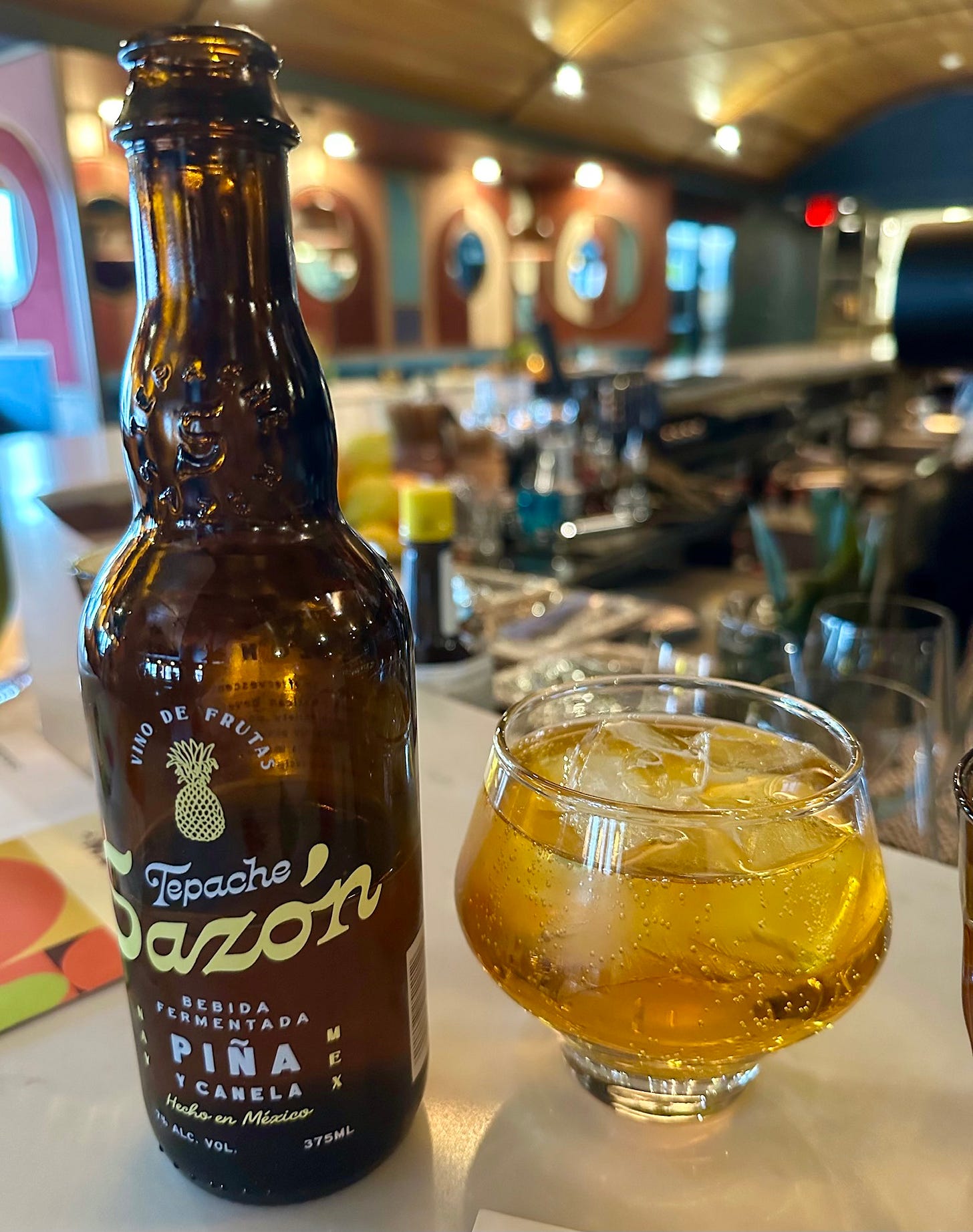
We tried one of those Tepache Sazóns a couple weeks ago. 10/10. Endorse.